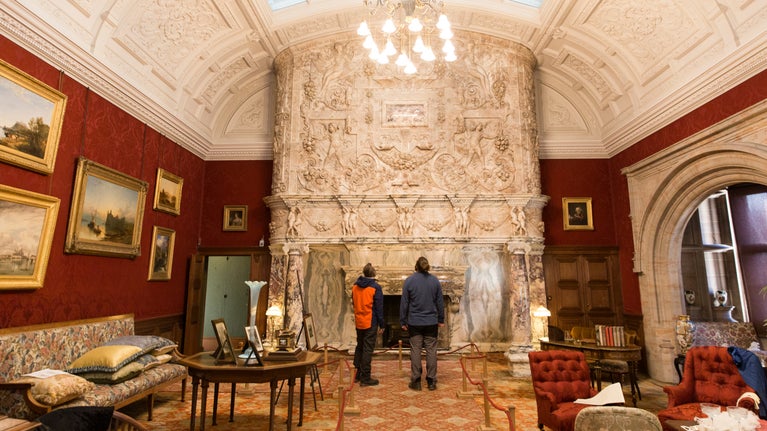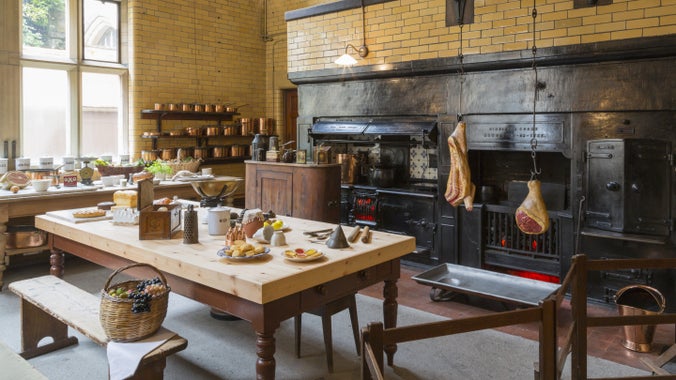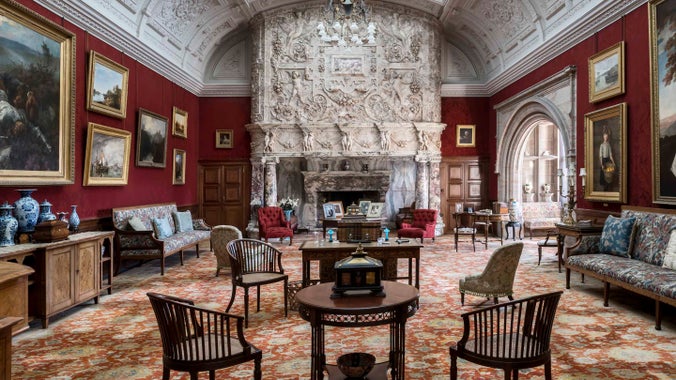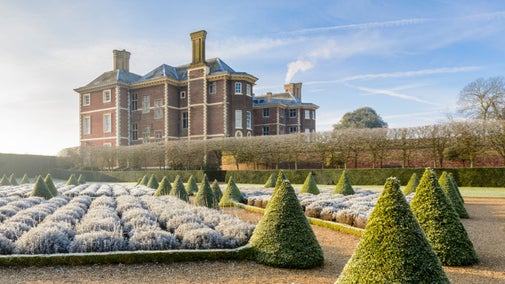
Discover more at Cragside
Find out when Cragside is open, how to get here, the things to see and do and more.

Step inside Britain’s original smart home — a ground-breaking Victorian mansion where innovation meets elegance. Powered by hydroelectricity, driven by hydraulics, and equipped with the latest 19th-century gadgets, this pioneering residence redefined modern living.
When it comes to Cragside House, not everything is at it seems. There are lavish luxuries and timesaving inventions across the House to seek out and find.
The engine room of Cragside House
At a glance, the Butler’s Pantry appears unassuming, but this would have been the control room of the House. This small room is located right next to both the service door and main entrance hall to accept deliveries and welcome guests.
On one wall was a telephone that connected the Butler to the Burnfoot Powerhouse – a small building at the bottom of the Valley and the hub for generating hydroelectricity. The Caretaker of Electric Light, managed the turbine, dynamos, and batteries at the Powerhouse. As the experimental technology for generating hydroelectricity was in its infancy, the system couldn’t power the whole House at the same time. So, with instruction from the Butler by telephone, The Caretaker would direct power to whichever room the Armstrongs and their guests were using.

The grand Kitchen with its clinical glazed brickwork, double heighted ceiling, marble worktops and the best equipment money could buy, is where you get your first introduction to how William Armstrong harnessed the power of water.
Gently rotating above a double range is a roasting spit. It’s operated by a water-powered Barker’s Mill in the basement. As the mill spins, it turns a vertical shaft connected to a bevel gear (or hinge) to direct the mechanism under the floorboards of the Kitchen. From here there is another gear that turns a series of cogs above the range making the spit turn. You can see this bespoke geared system spinning through viewing hatches in the Kitchen floor.
The servants had access to the best equipment money could buy as well as other time-saving gadgets including a hand-operated dumb-waiter that hoisted goods up from the Scullery below and an early dishwasher that pre-rinsed crockery.
Elevated Luxury
Just around the corner from the Kitchen is a passenger lift which could be one of the earliest lifts in the world. It was operated by the hydraulic ram in the basement.
Armstrong was a keen adapter, and he domesticated his hydraulic dock-side crane technology to create a smaller ‘Jigger’ engine. When the lift was in use the kitchen staff would hear this noisy industrial ram chugging back and forth as the cage rose up to 9-metres from the ground floor. This advanced addition to the home could be used by staff to transport luggage and heavy coal to the rooms on the upper floors.

More than a room to read books
This room is where the first household installation of Joseph Swan’s incandescent lightbulb took place. Sitting on top of the bookshelves are four cloisonne vases that were adapted to house the lightbulbs. The vases are made using copper, and servants would place them in a bowl of mercury – charged by hydroelectricity. The copper-sided vase acted and a return wire that completed the circuit to light the lamp.
The Library is one of the most complete rooms within Cragside House. There is William Morris stained glass in the bay window, decorative lampshades with rose and petal motifs, a fireplace with an Egyptian marble surround and shelves filled with books.
A private spa
The Armstrongs had their very own private spa complete with a changing room, showers, water closets, a ‘hot room’ and a ‘cool room’ with an impressive plunge pool with decorative Delf blue and white tiles.
Metal grates in the floor conceal pipes that were heated by a boiler in the basement below. In the depths of a cold Northumbrian winter, this luxurious private spa would have warmed and wowed the Armstrongs’ guests.

An extravagent soiree space to wine and dine
The Drawing Room was the party space where the Armstrongs hosted grand gatherings and soirees. The room was designed to impress guests including members of the Royal Family and powerful, international clients for Armstrong's armaments business.
The huge Italian marble and alabaster fireplace was carved in London and shipped in pieces to the town of Amble on the Northumberland coast. From here it was transported to Cragside by horse and cart and put back together in the Drawing Room like a giant jigsaw puzzle.
It’s 6-metres tall and decorated with columns, swags of fruit and cherubs. As it weighs in at almost 10-tonnes and located on the first floor of the House, it’s pinned deep into the crag with steel girders. A huge industrially woven carpet with orange and gold swirls adds further luxury, while the elliptical glass ceiling permitted parties by moonlight.

Find out when Cragside is open, how to get here, the things to see and do and more.
Cragside is often considered to be Britain’s original smart home. Discover more about the creation of Cragside and the people who made the remarkable place we know today.

Explore the ultimate landscaped garden in Northumberland. With spectacular vision, Victorians William and Margaret Armstrong transformed the grounds from a bare moorside into a fantasy mountain landscape. Created for beauty and function you’ll discover towering trees, overflowing flower beds, trickling burns, dramatic water cascades and engineered lakes that were created to harness the power of water.

Historic houses and buildings are full of stories, art and collections. Learn more about their past and plan your next visit.

From castles and country houses to pioneering feats of architecture, the National Trust cares for some of the North East’s most remarkable buildings. Step inside to uncover rich interiors, fascinating histories, and the lives of those who shaped these places. Whether you're drawn to dramatic design, innovation, or stories of the past, there's something to discover at every property.
